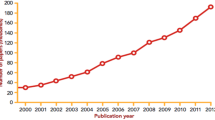Abstract
This paper examines two different, but closely related, classes of problems. The first part deals with whistleblowers, and the difficulties and dangers that they have often faced, although their actions, in the rare cases where they become necessary, are indispensable for the maintenance of honest science. The problems are illustrated by discussion of several specific cases from 1960 to 1990.
The second part deals with problems that face many young scientists today, and the stresses to which they are exposed in an increasingly competitive atmosphere. There are powerful pressures for premature publication, and many gifted scientists are driven to spend an inordinate amount of time in writing grant applications that are turned down for lack of funds, while receiving high praise from reviewers. Correction of conditions is an important matter for science policy; it is also important, among other things, to relieve pressures that would tend to encourage deviations from the standards necessary for trustworthy science.
Similar content being viewed by others
References
Bates H M, Craddock V M and Simpson M V (1960) The Biosynthesis of Cytochrome c in Cell-Free Systems,Journal of Biological Chemistry 235, 140–148.
Bates H M and Lipmann F (1960) Identification of γ-Glutamyl Cysteinyl Ribonucleic Acid as Intermediary in Glutathione Synthesis,Journal of Biological Chemistry 235, PC 22.
Lane B G and Lipmann F (1961) Nonparticipation of Ribonucleic Acid in Glutathione and Opthalmic Acid Synthesis,Journal of Biological Chemistry 236, PC 80–81.
Simpson M V, Skinner D M and Lucas J M (1961) On the Biosynthesis of Cytochrome c,Journal of Biological Chemistry 236, PC 81–82.
Broad W and Wade N (1982)Betrayers of the Truth, Simon and Shuster, New York, pp 74–76.
Fruton J S (1994)Eighty Years, Epikouros Press, New Haven, pp 124–126.
Personal communication from Byron G. Lane.
Webster G (1965) Studies on the Mechanism of Oxidative Phosphorylation. VIII. Purification of the Reduced Cytochrome c Coupling Factor,Journal of Biological Chemistry 240, 1365–1380.
For the case of Inez Austin, seeDefending the Earth: Abuses of Human Rights and the Environment, Human Rights Watch and Natural Resources Defense Council, June 1992, pp 102–103. This small book contains valuable reports of many other serious cases in many different countries.
U.S. Congress (1988, April 12) Fraud in NIH Grant Programs, Dingell Subcommittee Hearings, Serial No, 100–189, pp 152–163.
Baltimore D (1989) Baltimore’s Travels,Issues in Science and Technology 5 (4), 48–54.
National Research Council (1994)The Funding of Young Investigators in the Biological and Biomedical Sciences, National Academy Press, Washington D.C., 117 pp.
Author information
Authors and Affiliations
Rights and permissions
About this article
Cite this article
Edsall, J.T. On the hazards of whistleblowers and on some problems of young biomedical scientists in our time. Sci Eng Ethics 1, 329–340 (1995). https://doi.org/10.1007/BF02583249
Issue Date:
DOI: https://doi.org/10.1007/BF02583249




